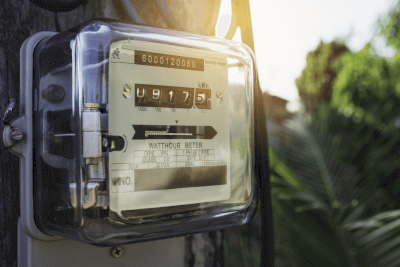What Is a Wattmeter?

A wattmeter is a device used to measure the power consumed by electrical and electronic equipment. A wattmeter is inserted between a power source and a load and calculates the power from the product of the applied voltage and the flowing current (voltage x current).
In AC, there is a phase difference between the voltage and current, which affects the power. Therefore, it is important to measure them at the same time. In recent years, the quality of power supplies has also become increasingly important, and some have functions to evaluate the waveforms of voltage, current, and power.
Usage of Wattmeters
In recent years, the need for electricity meters to monitor the power consumption of various electrical and electronic equipment has increased significantly due to the growing emphasis on reducing energy consumption in addressing global environmental issues.
Their applications range from general households for the purpose of saving electricity to power monitoring systems for factories and buildings. In addition to measuring power, development and production sites require high-precision, highly functional wattmeters for various evaluations such as phase angle, power factor, harmonics, flicker, distortion, and noise.
Principles of Wattmeters
Since electric power is the product of voltage and current, it can be calculated by measuring voltage and current, respectively. In the case of direct current, both voltage and current are constant. Therefore, power can be calculated by measuring each separately. But in the case of alternating current, the phase difference between voltage and current must be considered. As such, the instantaneous value of each must be measured continuously at the same time.
The instantaneous power calculated as the product of the values of voltage and current is integrated and averaged over one cycle to give the total electric power. This is the power actually consumed by the load and is called effective power. If the effective value of voltage is V, the effective value of current is I, and the phase difference between voltage and current is θ. Effective power can also be calculated as V × I × cos(θ).
AC power also includes reactive power and apparent power. Reactive power is the power that travels back and forth between the power source and the equipment without being consumed by the load and is due to the coil and capacitor components of the load. Reactive power can be calculated by V × I × sin(θ). Apparent power is the power that must be supplied from the power source, and the relationship equation is apparent power squared = active power squared + reactive power squared.